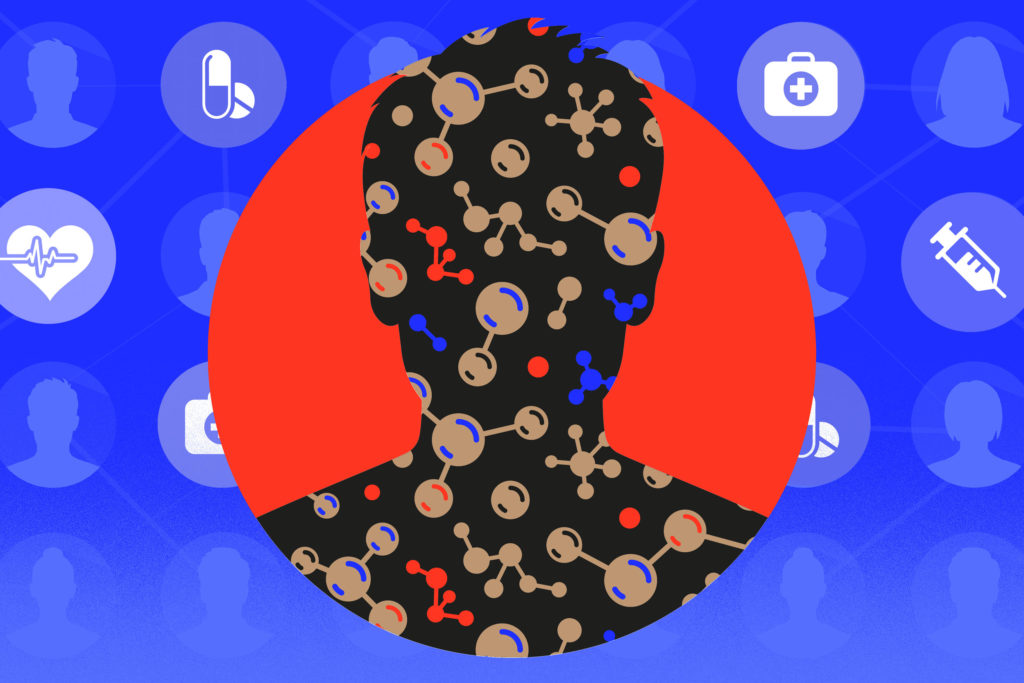Biology is never simple. As researchers make strides in reading and editing genes to treat disease, for instance, a growing body of evidence suggests that the proteins and metabolites surrounding those genes can’t be ignored.
The MIT spinout ReviveMed has created a platform for measuring metabolites — products of metabolism like lipids, cholesterol, sugar, and carbs — at scale. The company is using those measurements to uncover why some patients respond to treatments when others don’t and to better understand the drivers of disease.
“Historically, we’ve been able to measure a few hundred metabolites with high accuracy, but that’s a fraction of the metabolites that exist in our bodies,” says ReviveMed CEO Leila Pirhaji PhD ’16, who founded the company with Professor Ernest Fraenkel. “There’s a massive gap between what we’re accurately measuring and what exists in our body, and that’s what we want to tackle. We want to tap into the powerful insights from underutilized metabolite data.”
ReviveMed’s progress comes as the broader medical community is increasingly linking dysregulated metabolites to diseases like cancer, Alzheimer’s, and cardiovascular disease. ReviveMed is using its platform to help some of the largest pharmaceutical companies in the world find patients that stand to benefit from their treatments. It’s also offering software to academic researchers for free to help gain insights from untapped metabolite data.
“With the field of AI booming, we think we can overcome data problems that have limited the study of metabolites,” Pirhaji says. “There’s no foundation model for metabolomics, but we see how these models are changing various fields such as genomics, so we’re starting to pioneer their development.”
Finding a challenge
Pirhaji was born and raised in Iran before coming to MIT in 2010 to pursue her PhD in biological engineering. She had previously read Fraenkel’s research papers and was excited to contribute to the network models he was building, which integrated data from sources like genomes, proteomes, and other molecules.
“We were thinking about the big picture in terms of what you can do when you can measure everything — the genes, the RNA, the proteins, and small molecules like metabolites and lipids,” says Fraenkel, who currently serves on ReviveMed’s board of directors. “We’re probably only able to measure something like 0.1 percent of small molecules in the body. We thought there had to be a way to get as comprehensive a view of those molecules as we have for the other ones. That would allow us to map out all of the changes occurring in the cell, whether it’s in the context of cancer or development or degenerative diseases.”
About halfway through her PhD, Pirhaji sent some samples to a collaborator at Harvard University to collect data on the metabolome — the small molecules that are the products of metabolic processes. The collaborator sent Pirhaji back a huge excel sheet with thousands of lines of data — but they told her she’s better off ignoring everything beyond the top 100 rows because they had no idea what the other data meant. She took that as a challenge.
“I started thinking maybe we could use our network models to solve this problem,” Pirhaji recalls. “There was a lot of ambiguity in the data, and it was very interesting to me because no one had tried this before. It seemed like a big gap in the field.”
Pirhaji developed a huge knowledge graph that included millions of interactions between proteins and metabolites. The data was rich but messy — Pirhaji called it a “hair ball” that couldn’t tell researchers anything about disease. To make it more useful, she created a new way to characterize metabolic pathways and features. In a 2016 paper in Nature Methods, she described the system and used it to analyze metabolic changes in a model of Huntington’s disease.
Initially, Pirhaji had no intention of starting a company, but she started realizing the technology’s commercial potential in the final years of her PhD.
“There’s no entrepreneurial culture in Iran,” Pirhaji says. “I didn’t know how to start a company or turn science into a startup, so I leveraged everything MIT offered.”
Pirhaji began taking classes at the MIT Sloan School of Management, including Course 15.371 (Innovation Teams), where she teamed up with classmates to think about how to apply her technology. She also used the MIT Venture Mentoring Service and MIT Sandbox, and took part in the Martin Trust Center for MIT Entrepreneurship’s delta v startup accelerator.
When Pirhaji and Fraenkel officially founded ReviveMed, they worked with MIT’s Technology Licensing Office to access the patents around their work. Pirhaji has since further developed the platform to solve other problems she discovered from talks with hundreds of leaders in pharmaceutical companies.
ReviveMed began by working with hospitals to uncover how lipids are dysregulated in a disease known as metabolic dysfunction-associated steatohepatitis. In 2020, ReviveMed worked with Bristol Myers Squibb to predict how subsets of cancer patients would respond to the company’s immunotherapies.
Since then, ReviveMed has worked with several companies, including four of the top 10 global pharmaceutical companies, to help them understand the metabolic mechanisms behind their treatments. Those insights help identify the patients that stand to benefit the most from different therapies more quickly.
“If we know which patients will benefit from every drug, it would really decrease the complexity and time associated with clinical trials,” Pirhaji says. “Patients will get the right treatments faster.”
Generative models for metabolomics
Earlier this year, ReviveMed collected a dataset based on 20,000 patient blood samples that it used to create digital twins of patients and generative AI models for metabolomics research. ReviveMed is making its generative models available to nonprofit academic researchers, which could accelerate our understanding of how metabolites influence a range of diseases.
“We’re democratizing the use of metabolomic data,” Pirhaji says. “It’s impossible for us to have data from every single patient in the world, but our digital twins can be used to find patients that could benefit from treatments based on their demographics, for instance, by finding patients that could be at risk of cardiovascular disease.”
The work is part of ReviveMed’s mission to create metabolic foundation models that researchers and pharmaceutical companies can use to understand how diseases and treatments change the metabolites of patients.
“Leila solved a lot of really hard problems you face when you’re trying to take an idea out of the lab and turn it into something that’s robust and reproducible enough to be deployed in biomedicine,” Fraenkel says. “Along the way, she also realized the software that she’s developed is incredibly powerful by itself and could be transformational.”
Source: Read MoreÂ




